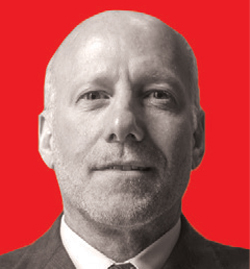Based on recent headlines, it might sound like the EB-5 visa program is akin to a kiss of death for some developers. In January, it became known that the U.S. Securities and Exchange Commission was investigating Kushner Companies’ use of the EB-5 program following a fundraising trip to China last May. At the time, Nicole Kushner Meyer name-dropped her
brother in the White House, Jared Kushner, during a pitch to investors from whom the company was hoping to raise $150 million for the One Journal Square project in Jersey City.
Meanwhile, up in Vermont, the Miami developer behind the Jay Peak resort project was ordered to pay $81 million back to 800 foreign investors who poured $450 million into what has been dubbed the largest ever fraudulent use of the program. To top it off, state officials are also being accused of being involved in the scandal. (None other than Harry Macklowe has offered up his condominium project 1 Wall Street if the beleaguered investors are looking to redeploy their money.)
 Despite the recent scandals, the program, which allows for foreigners to invest up to $1 million in job-creating projects in exchange for a green card, has a been a huge financing source for projects in Manhattan. As Congress deliberates the reauthorization of the program, which expires March 23, one of the main points of contention is that the funds are often directed toward major cities, while rural areas aren’t receiving nearly as much of the capital. There’s also a 10-year backlog in applications, and developers are returning investors’ money before they can obtain green cards — an unwelcome occurrence in the eyes of immigration authorities. That’s resulted in $16.6 billion in capital that investors need to redeploy into real estate or other businesses to remain in good standing with the program, according to EB-5 servicer NES Financial. (It should be noted that subsequent projects receive less oversight and require no job-creation.)
Despite the recent scandals, the program, which allows for foreigners to invest up to $1 million in job-creating projects in exchange for a green card, has a been a huge financing source for projects in Manhattan. As Congress deliberates the reauthorization of the program, which expires March 23, one of the main points of contention is that the funds are often directed toward major cities, while rural areas aren’t receiving nearly as much of the capital. There’s also a 10-year backlog in applications, and developers are returning investors’ money before they can obtain green cards — an unwelcome occurrence in the eyes of immigration authorities. That’s resulted in $16.6 billion in capital that investors need to redeploy into real estate or other businesses to remain in good standing with the program, according to EB-5 servicer NES Financial. (It should be noted that subsequent projects receive less oversight and require no job-creation.)
So, all considered, is EB-5 — referred to by some as the “crack cocaine of real estate financing” — really a reliable source of capital? According to the four experts The Real Deal spoke to, the answer varies from a resounding yes to a shrug. But, to them, it’s clear the program is not in jeopardy, despite red flags to the contrary.
Russell Barr
Founder and Managing Partner, Barr Law Group
 You’re representing EB-5 investors in a class-action lawsuit against the state of Vermont for officials’ role in the Jay Peak resort fraud. What’s the status of that case? We filed an opposition to the state’s motion to dismiss our complaint [in late January] that we believe took the state to task. Our complaint was filed at 80-odd pages, and it’s very detailed. It’s one of the only complaints in the history of my practice where about 90 percent of every allegation is supported by documentary evidence, and it ties the state of Vermont to this fraud. I think we’re going to prevail, no question, but the state won’t dig out of this for 10 or 20 years. The program is, in effect, dead up here.
You’re representing EB-5 investors in a class-action lawsuit against the state of Vermont for officials’ role in the Jay Peak resort fraud. What’s the status of that case? We filed an opposition to the state’s motion to dismiss our complaint [in late January] that we believe took the state to task. Our complaint was filed at 80-odd pages, and it’s very detailed. It’s one of the only complaints in the history of my practice where about 90 percent of every allegation is supported by documentary evidence, and it ties the state of Vermont to this fraud. I think we’re going to prevail, no question, but the state won’t dig out of this for 10 or 20 years. The program is, in effect, dead up here.
Do you think there are aspects of the EB-5 program that could be amended to prevent such a fraud from occurring again? I don’t think this was a program-wide problem. This was outright fraud. What made it so big, so long-standing and so widespread was that a few actors within the state government were involved in it. That just needs to get prosecuted.
The only issue I see is that this program was designed to help rural America or high-unemployment areas, and what’s happened is EB-5 has been a little maneuvered so that major cities are benefiting from the program. Just the term itself, TEA, does not to me suggest Wall Street or Hudson Yards. Target employment areas suggest to me Newport, Vermont, or northern parts of New York State, New Hampshire or Maine. Just pick your big state, but it should not be Manhattan.
Why do you feel Manhattan developers’ use of EB-5 precludes the success of the program in rural areas? Because, as an example, imagine a Chinese foreign national from Beijing has a choice to invest in a Wall Street project in Lower Manhattan or a ski area in northern Vermont; I think nine out of 10 times they would go with Manhattan simply because they know New York and they don’t know northern Vermont. I think that’s a completely unfair competitive advantage for no real economic reason — because you can substitute capital in Manhattan a lot easier than you can substitute capital or capital stacks in northern Vermont. That part of the program needs to get cleaned up and rethought.
Nick Mastroianni II
Chairman and CEO, U.S. Immigration Fund
 What changes have you seen in EB-5 investors? There’s been an addition of countries that really weren’t active. China is still the most active, [and] always will be the most active, followed by Vietnam and Korea, but India has become active. There’s a very simple [reason] why: The Chinese waiting list for a visa right now is six to eight years. Last year, the Chinese probably filed 10,000 to 12,000 petitions; the Indians filed about 150. So [in India], it’s very much underutilized. We as an industry, and I as a company, have opened up in countries like India, South America [Brazil and Columbia], South Korea, Taiwan and Vietnam.
What changes have you seen in EB-5 investors? There’s been an addition of countries that really weren’t active. China is still the most active, [and] always will be the most active, followed by Vietnam and Korea, but India has become active. There’s a very simple [reason] why: The Chinese waiting list for a visa right now is six to eight years. Last year, the Chinese probably filed 10,000 to 12,000 petitions; the Indians filed about 150. So [in India], it’s very much underutilized. We as an industry, and I as a company, have opened up in countries like India, South America [Brazil and Columbia], South Korea, Taiwan and Vietnam.
Do you expect changes to the program this year? I think 2018 holds changes that have long been coming, and I believe those changes will be driven by the White House — the president and his immigration advisors. Sen. Chuck Grassley [R-Iowa] and Sen. Patrick Leahy [D-Vermont] have been against urban areas being able to use the program on a level playing field as rural areas. But now that the president has taken on the challenge of comprehensive immigration reform, I think something is going to happen.
What are you hoping to see? Everyone agrees the amount should be increased, so that’s going to happen — we’re sure of that. Everyone agrees that there should be more integrity measures as part of the program guidelines, so that’s going to happen.
Other changes that may happen will be whether or not to adopt commuter patterns as a method to determine target employment area, so areas where workers don’t live in the area of the projects but commute to them. The next hot button is the amount of visas that are allowed. We need more capacity, more visas.
Some developers say if EB-5 becomes too rigorous, they might abandon the program. Are you worried about that? I don’t see regulations deterring developers. I see the regulations deterring projects from being eligible for the program. If there’s a large advantage for ski resorts and rural projects and a big disadvantage for urban projects, which have been the lifeblood of the program, then, of course, the program is going to be very much underutilized.
Reid Thomas
Executive Vice President and General Manager – EB-5, NES Financial
 You were just at the 2018 Las Vegas EB-5 & Global Investment Immigration Convention. What’s the word on the street? On the one hand, you’ve got the retrogression for Chinese investors. The program has been so popular that the waiting time for a Chinese investor is longer that it’s ever been, so that has slowed the number of investors coming in from China. On the other hand, it’s increased dramatically the number of investors coming from other countries. So there’s this shift, and that has an impact on where issuers go to raise capital. You’ve [also] got the legislation emerging. [This year] is going to be a year with some big changes.
You were just at the 2018 Las Vegas EB-5 & Global Investment Immigration Convention. What’s the word on the street? On the one hand, you’ve got the retrogression for Chinese investors. The program has been so popular that the waiting time for a Chinese investor is longer that it’s ever been, so that has slowed the number of investors coming in from China. On the other hand, it’s increased dramatically the number of investors coming from other countries. So there’s this shift, and that has an impact on where issuers go to raise capital. You’ve [also] got the legislation emerging. [This year] is going to be a year with some big changes.
What is being said about the legislation? From what I know, all the foundations of what’s going to be in the legislation are already worked out. So it’s really not a question of if the program gets extended longer, it’s when. One of the key things is an increase in the investment amount — it hasn’t increased since 1992 — and then these things called integrity measures.
What would integrity measures do? Integrity measures will frankly be good for our business because our purpose is to really provide security, transparency and compliance to stakeholders. What we’re seeing is a move toward more institutional-caliber offerings by issuers which use companies like NES to do independent oversight and third-party fund administration — the kinds of things you see in traditional financial services markets. Those things are becoming a prerequisite in EB-5 financing.
Would legislation address backlogs or increase the current limit of 10,000 visas allocated per year? I wish it would, but I don’t think it will — not in this go-around. I do think that the possibility for additional capacity as it relates to infrastructure or disaster relief could make the program bigger. It may not be part of this legislation, but look at what the Trump government is trying to do: They need to get capital to do their infrastructure plan. Well, EB-5 would be a good source. I’m not sure anybody would ever do that, and there’s no proposal I’ve seen for them to do that, but I’m optimistic that that will be a vehicle to increase investment like this.
Have incidents, notably with Kushner Companies fundraising for their Jersey project, thrown the program into a questionable light? The incidents like the Kushner thing get a lot of media play and, unfortunately, it’s negative. With respect to our business, that actually ends up being good. It’s a good reminder for folks in the industry that they need to embrace best practices and operate in compliance with the different regulations and laws.
Daniel Lundy
Partner, Klasko Immigration Law Partners
 What do you see as the future of EB-5? We’re waiting. Our understanding is that there is a deal [among lawmakers] on EB-5, and we’ve seen a framework. Nobody that I know has actually seen a bill or language.
What do you see as the future of EB-5? We’re waiting. Our understanding is that there is a deal [among lawmakers] on EB-5, and we’ve seen a framework. Nobody that I know has actually seen a bill or language.
Since you’ve seen the legislative framework, what are some the proposed changes? Defining a targeted employment area would be substantially more difficult that it is today. The plan is to have 3,000 visas set aside for rural projects and “urban distressed” projects, which essentially become your TEAs. So there’s going to be 1,500 visas available every year for rural areas and 1,500 for urban distressed areas — all allocated before projects in other areas. What this means for people from China, who are subject to a visa backlog, is that if they invest in a rural or urban distressed project, they would essentially get moved to the front of the line.
How do you see these changes playing out? Demand is going to cool a little bit. Except, if these rural and urban distressed projects allow people to basically jump to the head of the line, they’re going to sell out extraordinarily quickly. If this law passes, then there’s going to be a mad rush to find these projects, and they’re going to do very well for a period of time.
Are rural or urban distressed projects riskier? I don’t think the location changes the risk if the fundamentals are there. But there are not a lot of projects in these areas. We have one or two.
Do you see any new markets overtaking China? Other markets are increasing, but they’ll never get to the level of China. You won’t be able to raise $100 million in six months like you used to in China. There’s no infrastructure in other places, there’s no mass-marketing apparatus to find investors and to push investors, and there also aren’t as many of the push factors. In a lot of places in the world, if you have a lot of money, you’re living very nicely and you may not necessarily need, or want, to pay to emigrate to the United States.
Do you think the China market could recover? If we were to somehow get more visa capacity, I think the Chinese market would continue — but I don’t see it ever coming back up to the 2015 levels.
